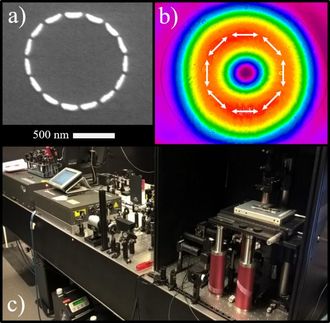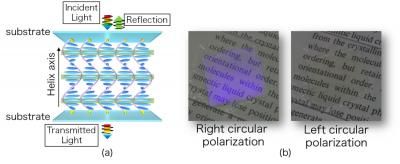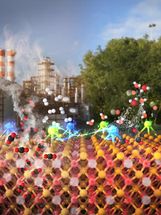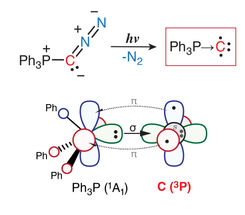New material puts a twist in light
Scientists at The Australian National University (ANU) have uncovered the secret to twisting light at will. It is the latest step in the development of photonics, the faster, more compact and less carbon-hungry successor to electronics. A random find in the washing basket led the team to create the latest in a new breed of materials known as metamaterials. These artificial materials show extraordinary properties quite unlike natural materials.
"Our material can put a twist into light that is, rotate its polarisation orders of magnitude more strongly than natural materials," said lead author Mingkai Liu, a PhD student at the ANU Research School of Physics and Engineering (RSPE). "And we can switch the effect on and off directly with light."
Electronics is estimated to account for two per cent of the global carbon footprint, a figure which photonics has the potential to reduce significantly. Already light carried by fibre optics, has replaced electricity for carrying signals over long distances. The next step is to develop photonic analogues of electronic computer chips, by actively controlling the properties of light, such as its polarisation.
The ability of a material to rotate polarisation, as in this experiment, springs from the asymmetry of a molecule. It occurs in natural minerals and substances; for example, sugar is asymmetric and so polarisation rotation can be used to measure sugar concentrations, which is useful in diabetes research.
However the remarkable properties of this artificial material might first be put to use in the budding photonics industry, suggests co-author Dr David Powell, also from RSPE.
"It's another completely new tool in the toolbox for processing light," he says. "Thin slices of these materials can replace bulky collections of lenses and mirrors. This miniaturisation could lead to the creation of more compact opto-electronic devices, such as a light-based version of the electronic transistor."
The metamaterials are formed from a pattern of tiny metal shapes, dubbed meta-atoms. To obtain optical rotation Mr Liu and his colleagues used pairs of C-shaped meta-atoms, one suspended above the other by a fine wire. When light is shined on to the pair of meta-atoms the top one rotates, making the system asymmetric.
"The high responsiveness of the system comes because it is very easy to make something hanging rotate," says Mr Liu.
"The idea came to me when I found a piece of wire in my washing one day."
The fact that the team's meta-atoms move when light shines on them adds a new dimension, he says.
"Because light affects the symmetry of our system, you can tune your material's response simply by shining a light beam on it. Tunability of a metamaterial is an important step towards building devices based on these artificial materials," he says.
Most read news
Organizations
Other news from the department science

Get the chemical industry in your inbox
By submitting this form you agree that LUMITOS AG will send you the newsletter(s) selected above by email. Your data will not be passed on to third parties. Your data will be stored and processed in accordance with our data protection regulations. LUMITOS may contact you by email for the purpose of advertising or market and opinion surveys. You can revoke your consent at any time without giving reasons to LUMITOS AG, Ernst-Augustin-Str. 2, 12489 Berlin, Germany or by e-mail at revoke@lumitos.com with effect for the future. In addition, each email contains a link to unsubscribe from the corresponding newsletter.




















































